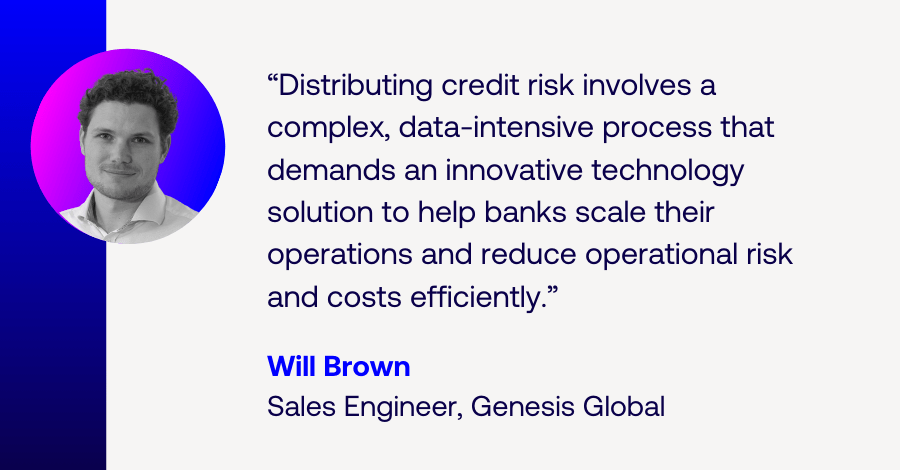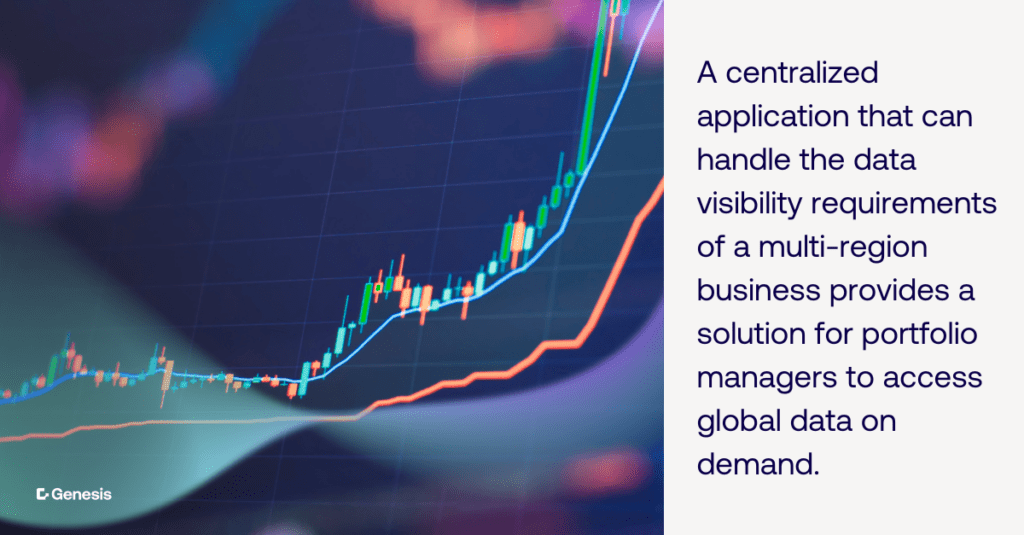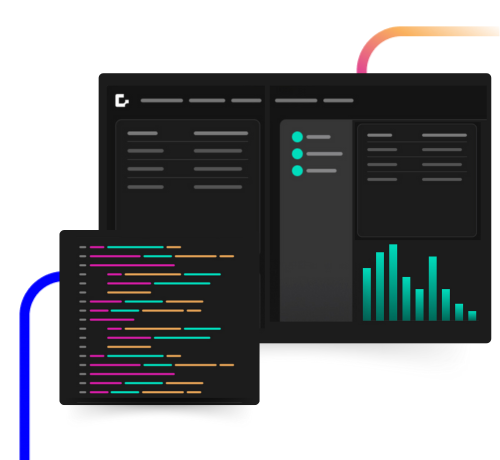Credit insurance: how implementing a technology solution can scale your business while reducing operational risk

Table of Contents
Credit Risk Insurance
Credit Risk Insurance (CRI) is a hedging product leveraged by banks to secure protection against the risk of non-payment on lending and trade transactions.
The risk mitigation and capital relief benefits that CRI offers are increasingly important in enabling banks to grow in a risk accepted manner, both in their Investment Banking and Trade Finance arms.
The ability to scale their insurance portfolios is critical to the success of this growth.
Credit insurance businesses, which often include Export Credit Agencies (ECA’s) and Risk Participation, usually run using manual processes that are insufficient for the size of business and growth required. These manual processes, typically centered around home-grown spreadsheets and macros, lead to both inefficiencies and increased operational risk.
This inevitably limits a bank’s ability to expand their credit insurance business, and thus meet the risk mitigation needs of their lending and trade counterparts.
Transforming and evolving these manual processes using a centralized finance-grade application is an important evolutionary step for CRI teams as it gives them a solid foundation to scale.
This blog will focus on three key recurring themes: improving team productivity, enhancing real-time portfolio and risk monitoring, as well as reducing operational risk.

Improving Team Productivity
Manual processes are painful and reduce team efficiency. Employees can be overwhelmed by time-consuming practices such as:
- The duplicate entry of data across multiple locations
- The difficulty of creating reports
- Manual consolidation of global data.
These painful practices are common within the bank CRI market and only further exacerbated when a business is effectively run on spreadsheets.
The time spent on these avoidable activities within CRI teams limit their ability to grow their insurance portfolio.
Without modern systems in place, the only way a business can grow is to add more people into the existing team which can be unviable and introduce further operational risk.
Given the increasing need for capital relief in financial organizations, the demands on CRI teams require them to find other ways to become more efficient.
A good first step on a journey to become more efficient is to implement an intuitive and secure application that can manage a CRI team’s workflow and portfolio.
A solution of this sort can offer a single source of truth that all team members can access. A centralized data source, intuitive user interface and reporting tools, can ease the process of accessing portfolio data and reduce the need for data re-entry across multiple systems.
One example of this is the repetitive process of copying and pasting information from one system to another to communicate with the insurance market.
A modern technology solution running just standalone can bring efficiency gains and once embedded you can focus your efforts on integrating the solution with internal bank systems. Taking this step will provide a further level of efficiency for the team. For example, integrating with your bank’s internal loan booking system supports the easy booking of new insurance policies as well as the transfer of real-time exposure data, all without human intervention.
Through the implementation of an integrated finance-grade application, your CRI team can reduce its reliance on manual processes and realize the efficiency gains that will allow your business to scale and meet external demands.
Real-time portfolio and risk monitoring
Running a CRI portfolio on spreadsheets often means that there is no single source of truth for business data. Most bank CRI teams span multiple countries and regions.
As a result, users should only have access to data for their own region. It is difficult to apply user-based permissions and access to data within spreadsheets.
The typical workaround is that each region will run its own version of the spreadsheet that ultimately needs to be consolidated by a central portfolio manager who has the oversight to create a single holistic view.
In some banks, this data collation can take a long time, leaving the business with a view several weeks behind the current day.
This causes problems from a risk management point of view as teams cannot accurately report on their current exposure.

This data is then available for real-time analysis and reporting, providing an accurate view of the team’s exposure.
Once real-time portfolio data is available, the downstream processes such as counterparty risk limit management and exposure tracking become much easier.
Teams can leverage real-time alerting on limits and policy events to ensure that users are notified of time-sensitive information such as premium payments.
This type of monitoring and alerting is not possible for teams relying on manual processes and those contained in spreadsheets.
Only by implementing a finance-grade solution, can a CRI team have the tools required to fulfil their portfolio and risk monitoring needs.
This also helps to reduce the operational risk of the business, an area we will dig into in the next section.
Reducing Operational Risk
Operational risk is one of the biggest problems that organizations face when they rely on manual processes and spreadsheets.
Risks come from several factors such as lack of validations and controls, data loss and an absence of audit or logging of user activity.
These factors cause CRI teams to run with a higher level of operational risk, thus increasing the likelihood of regulatory investigation, and inhibiting them from growing their business until those risks have been mitigated.
The implementation of a finance-grade system within a CRI team can reduce operational risk present in the business by improving data accuracy. Within the Genesis Credit Insurance Application, validations ensure the accuracy of data through the system. Workflow validations block deals and policies from being bound without the requisite information and ensure any internal 4-eyes approvals and checks are complete.
Moving checks and balances away from manual processes, and into an audited solution provides confidence in the business practices being operated thus allowing teams to further scale their business without the fear of regulatory scrutiny.
Without modernizing CRI businesses processes, banks run an inherently high level of operational risk. Only by implementing an auditable and secure system will teams be able to lower that risk, thus enabling them to achieve the required growth.
The implementation of a finance-grade solution will CRI teams be able to keep up with the bank demands for risk mitigation through scaling their business and reducing operational risk.
The Genesis Credit Insurance Application (CIA) is one such example that banks within the industry are using to help them achieve their next stage of growth.
Start building finance-grade
applications 10x faster
Explore the Genesis Application Platform in action with a 60-day free trial* to get your first application built and in-market faster than ever before.












